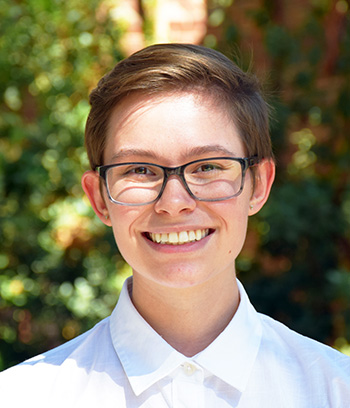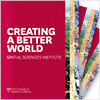When I first came to USC I knew that I wanted to study placemaking. I started my undergraduate in the Architecture program and spent my first year obsessing over the building as a unit of analysis. I quickly found that was more interested in how these units interacted and the circumstances that brought them into reality than the details within. Having enjoyed courses that discussed the intersection between architecture and the city, I believed that the Urban Planning track in Price was the natural next step in my education. While I enjoyed the framework of analysis through which we approached challenges and opportunities, I found myself spending the next year wishing I could incorporate data into this theory-driven approach. As my second year of college was coming to a close, I wanted to find an academic environment that combined data, theory, and design principles to understand and impact the world around me. I found this and so much more in the GeoDesign major.
The program has a strong foundation in the principles of geography, upon which evolving concepts of place and practical uses of GIS are layered. The two pillars of the built environment, Architecture and Urban Planning, are established in a series of courses in the School of Architecture and the Price School of Public Policy. These core classes set up an understanding for the design and planning method called GeoDesign, which is not a field itself, but a lens through which we can understand challenges and opportunities. I found that I could use the tool of GeoDesign to better understand emerging urban challenges and bridge the gap between the varied approaches of the people and professionals involve in placemaking. The program’s emphasis on multidisciplinary collaboration encouraged me to complete a minor in Architecture, study statistical analysis in political science, and explore the relationship between anthropology and film.
Through my studies and involvement in this program, I’ve had many opportunities I wouldn’t have dreamed of elsewhere. I got to work on a collaborative development proposal in Amsterdam with the Problems Without Passports summer program. In my courses, I designed redevelopment proposals for several sites in Los Angeles and got feedback from the professionals that worked on these projects at the time. During the GeoDesign Practicum, our team performed concurrent studies with our client for regional planning authorities. In my senior year, I pursued a research project with the City of Los Angeles and Esri in which our team produce maps and analyses of trends in crime data. I later had the privilege of presenting the findings from this crime trend analysis for civic and industry leaders in both small conferences with Deputy Mayors at City Hall and at the Geospatial Summit in front of hundreds of attendees. The quality and abundance of practical experience this program offers has given me the confidence tackle any data set, apply the GeoDesign framework to new environments, and present my work to both experts and those who are less familiar with spatial analysis.
My journey to the Spatial Sciences Institute has been a winding road, but one well worth travelling. While obtaining my B.S. in GeoDesign, I had the privilege of working with students, staff, and faculty whose diverse interests and zeal for collaboration and innovation made the environment of the Spatial Sciences Institute unlike any other academic environment I have experienced. Since my graduation in May of 2017, I have made the decision to stay in Los Angeles, the city I’ve grown to love while exploring its many places through both study and my own adventures. I hope to find work here that allows me to engage in data-driven placemaking that will benefit and include all Angelinos.




